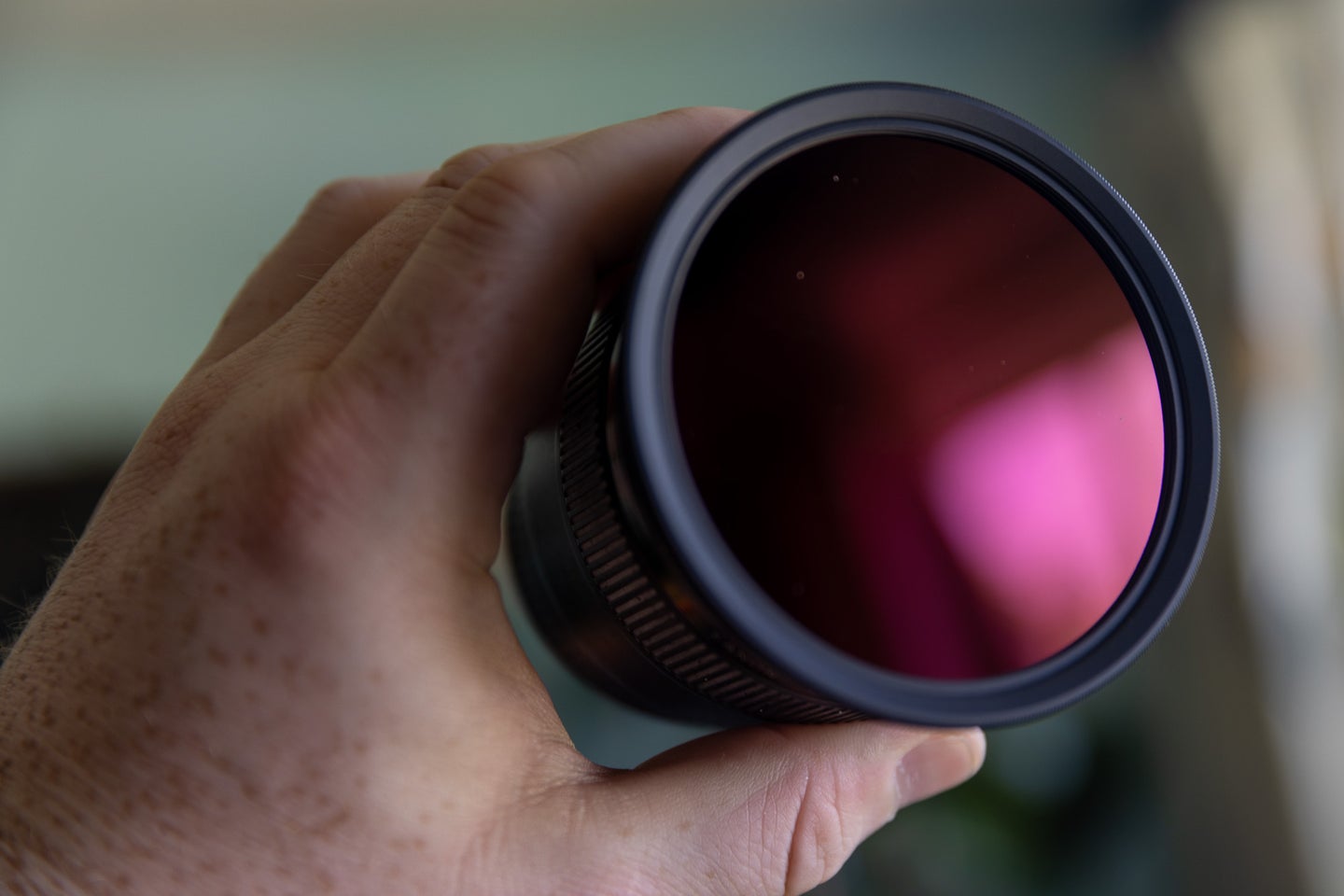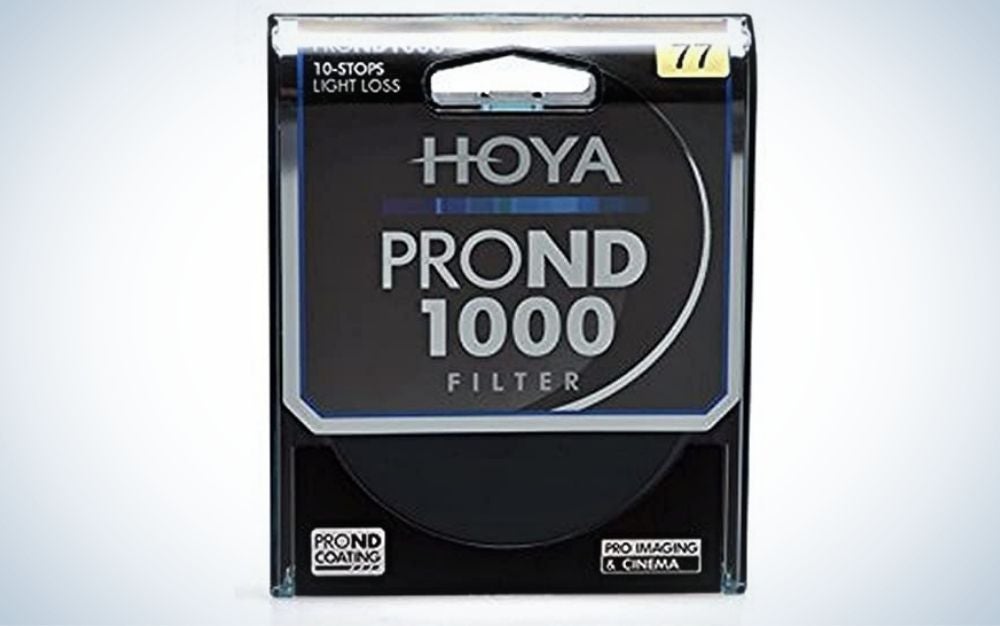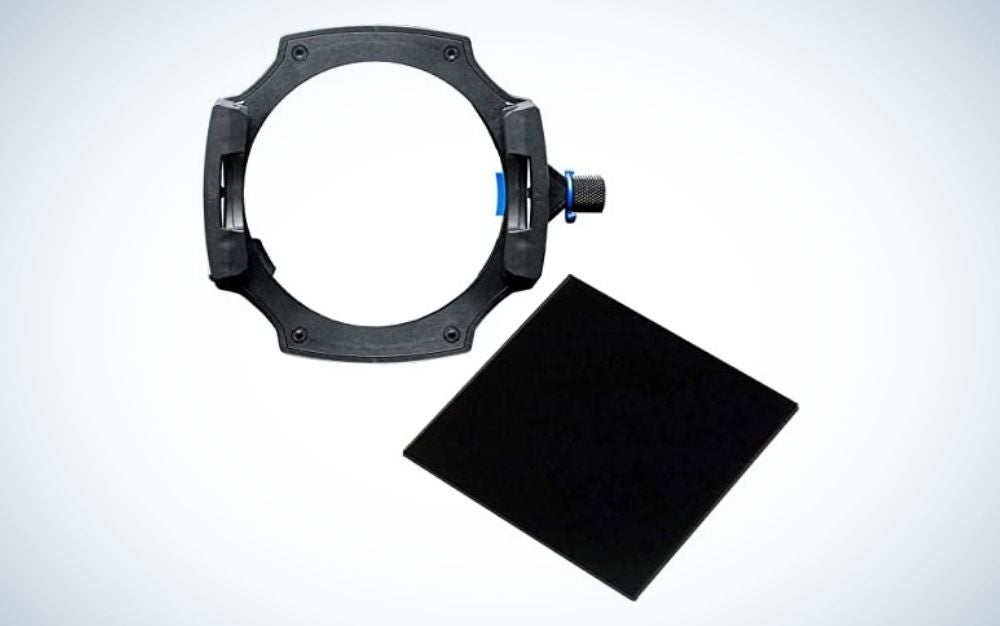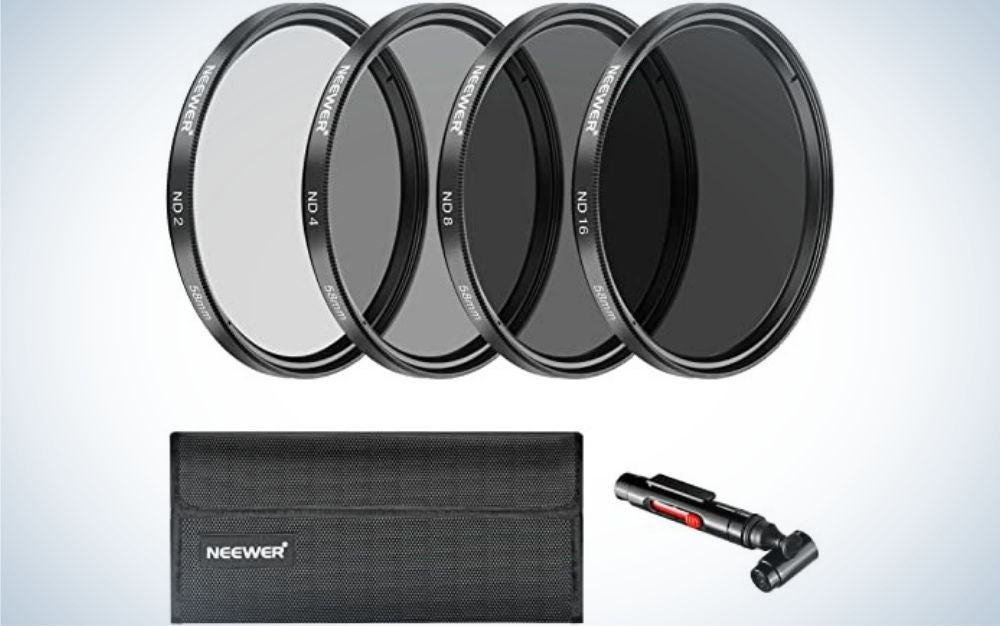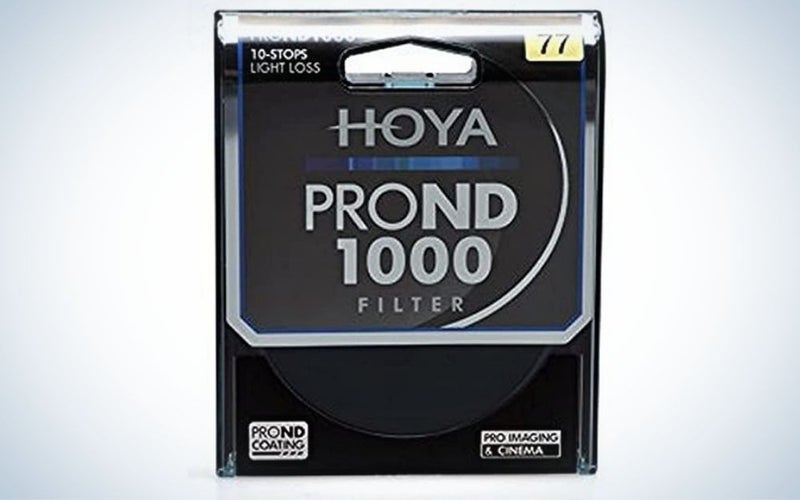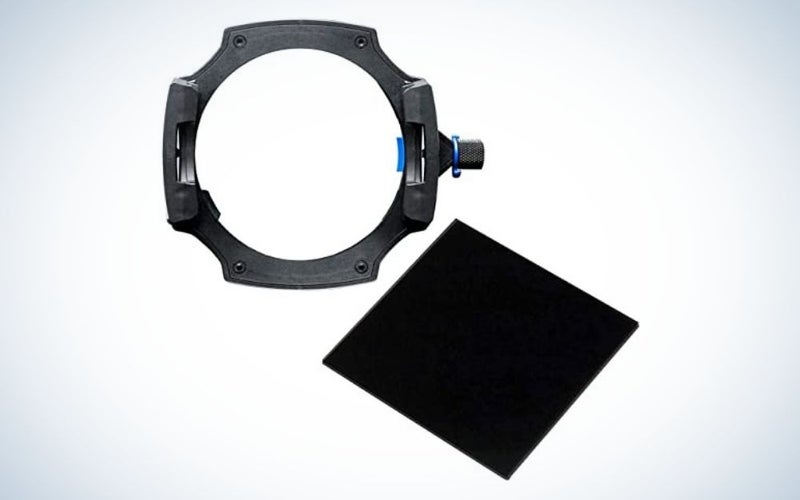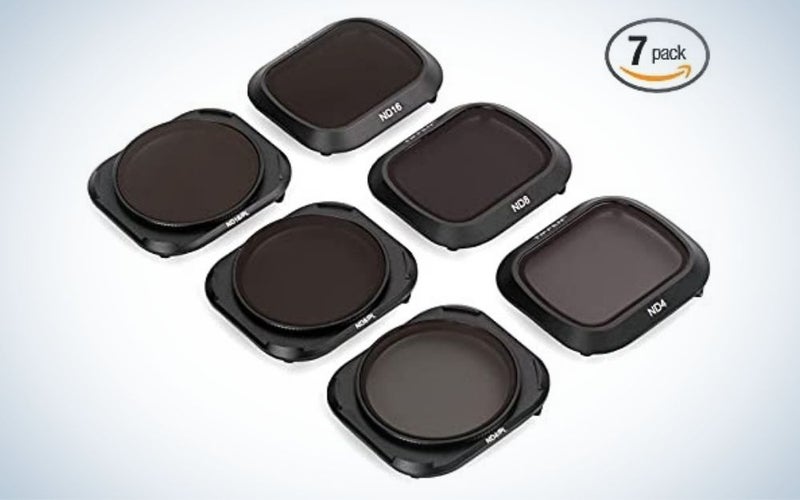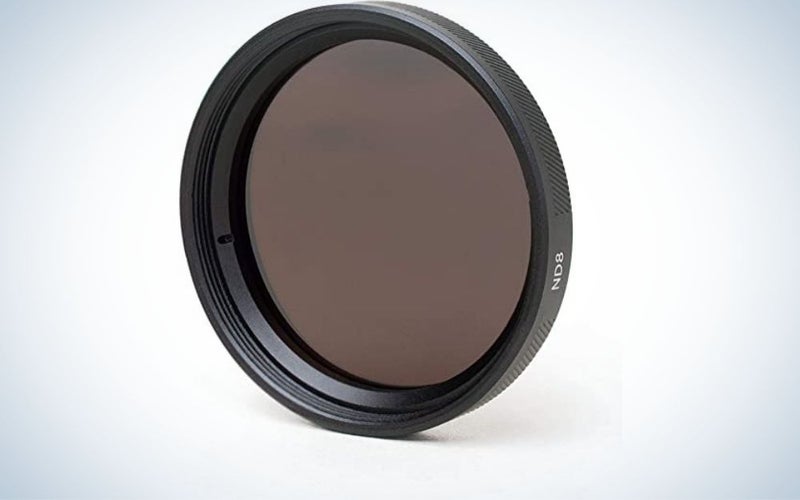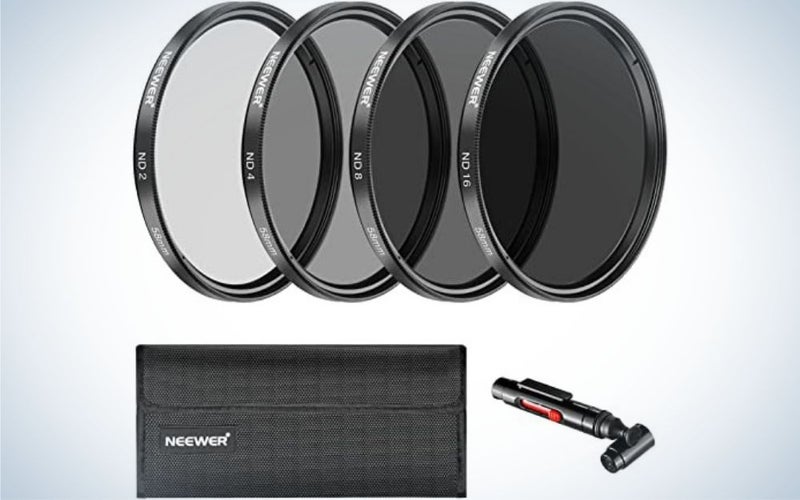We may earn revenue from the products available on this page and participate in affiliate programs. Learn more ›
A quality ND filter (short for neutral density filter) cuts the amount of light coming into the camera without affecting the color or overall appearance of the image. While photographers often want more light to make their images, limiting that incoming illumination can come in handy during a variety of shooting scenarios. For instance, it will allow you to shoot long exposures even on the brightest days. They’re great for cityscapes and essential for people who shoot a lot of video and need to keep careful control over their shutter speeds. The best ND filters offer effective light reduction without adding reflections, distortions, or other negative effects to your images.
- Best overall: HOYA Pro ND Filter
- Best for cinematography: Lee Filters Stopper
- Best for drones: Tiffen Camera Lens Filters for Compact DJI Mavic 2 Pro Drone
- Best for smartphones: Moment 37mm ND Filter
- Best budget: Neewer ND Filter Kit
Things to consider when shopping for the best ND filter
Shooting with an ND filter is a bit like putting a pair of sunglasses on your camera lens. These colorless filters attach to the front of your lens and cut the intensity of the natural sunlight so you can have more control over your aperture and shutter speeds even on the sunniest days.
Although photographers love their light, there is such a thing as too much light. Shooting with an ND filter on your lens will allow you to shoot with a wide aperture even on a sunny day—something that can be extremely useful for portrait photographers, street photographers and videographers. Shooting with an ND filter also means that you can extend the time of your exposures. Nature photographers often rely on them to shoot sunrise and sunset images, or to blur motion in a landscape. If you happen to have hiked to that beautiful waterfall on an extremely sunny day it might be difficult to adjust your camera’s settings to show the movement in that water. Attaching an ND filter to your camera’s lens is an easy fix.
What ND filter is right for me
ND filters typically come in 3-stop, 6-stop and 10-stop increments. You should select an ND filter by considering the lighting conditions on the day that you are shooting and also how much you want to extend your shutter speeds by. A 10-stop filter is the darkest of the ND filters and will help you extend 1/60 second at f/20 exposure to nearly a minute. An exposure this long will allow you to blur out pedestrians and cars in a cityscape or capture a beautifully smooth lake out in nature. It’s not unusual for photographers who use ND filters to carry a kit that includes a 3-stop, 6-stop and 10-stop filter so that they can select the best one for their shooting scenario.
Variable ND filters
If you’re not sure how much neutral density you’re going to need, you can always opt for a variable model. These typically consist of several elements, one of which attaches directly to your lens, the other which spins around like you’d find on a circular polarizer.
As you rotate the front element, the variable ND filter will get lighter or darker depending on which direction you go. While these absolutely add utility to the product, they also add more glass and more opportunities for reflections and other light transmission issues that can affect your image. Some even cause a large, shadowy “X” pattern on image under the wrong circumstances. A high-end version will minimize your chances of screwing things up, but it’s worth checking it out yourself at home before you take your new filter out on a real shoot.
Shape
ND filters are typically sold as square filters or circular filters. Choosing what one is right for you has a lot to do with personal preference. Square filters will require a filter holder in order to be used with the camera. The addition of this accessory makes them more expensive initially, but many photographers and videographers find that using square filters and a filter holder make it easier to swap filter strengths while out in the field. A square filter will generally work better if you are shooting with lens hoods on your cameras.
A circular filter will screw onto the front element of your lens. A screw in circular filter can be more convenient to travel with if you are planning to stick with one strength of ND filter, because you can simply leave it attached to your lens at the end of your shoot. However, if you are shooting with circular screw in filters you need to pay extra attention to the diameter of your lens. These filters come in very specific sizes in order to be compatible with whatever lens is attached to the camera.
Graduated filters
While you won’t find any graduated filters on this list, you will find them out in the market when you’re shopping for ND filters. Graduated models only block light on part of the scene, which can come in handy if you’re trying to regulate your exposure of a bright sky and a darker foreground. It can also look dramatic and you’ve probably seen the effect in TV shows like Top Gear or movies like Top Gun.
Our picks for the best ND filters
With some of the most important terms defined, we can move onto the list of picks. While we’ve chosen models that address specific users and shooting scenarios, everyone’s needs differ. There’s a lot of overlap when it comes to features and quality, so be sure to check out all the options before making a purchase.
Best overall: HOYA Pro ND Filter
Hoya
Why It Made The Cut: The circular screw-in filters from Hoya don’t require an additional accessory to use, opt for high-quality glass, come in a variety of sizes, and 1-stop to 16-stop density intensity.
Specs:
- Circular screw in filter
- Aluminum and glass construction
- ACCU-ND coating for neutral color balance
Pros
- Large range of ND filters
- Low profile ring avoids vignetting
- Compact
Cons
- Screw in ND filters can be time consuming to attach
- Expensive
Hoya has one of the best reputations in the filter market. Its ND filters come in a variety of sizes and densities from one to 16 stops. The filters are made of glass and aluminum and have an ACCU ND coating for accurate and neutral color balance. They’re more compact than a square filter and since they screw onto the front of your lens they’re also easy to travel with.
Hoya has also done an impressive job keeping to the “neutral” part of the product name. It won’t affect your overall color balance, so you won’t have to make a big adjustment after attaching it. That’s a big deal if you’re shooting in a high-volume situation.
Best for cinematography: Lee Filters Stopper
Lee Filters
Why It Made The Cut: Lee Filters have been making high-quality ND filters since the late ‘60s and, even know they’re pricey, they’re built to last.
Specs:
- 10-stop ND filter
- Square
- Sold with filter holder
Pros
- Excellent built quality
- Modular design
- Easy to use mounting system
Cons
- Expensive
One of Lee’s most well-known products, the Big Stopper is a high quality 10-stop ND filter. The square shaped filters attach to the camera using Lee’s filter holder, which is compatible with all of the Lee filters, and has an innovative design that makes it easy to swap out filters while shooting. The holder features a multi-function control pin for fast one-handed mounting that can be rotated or locked into position depending on a photographer’s preference. Although Lee’s filters do require an additional accessory of the filter holder, many photographers favor this setup as it saves time out in the field when swapping ND filters. The 100mm x 100mm measurements also make it large enough to cover just about any lens you have in your bag so you can save money if you’re planning to use it across a variety of glass.
Best for drones: Tiffen Camera Lens Filters for Compact DJI Mavic 2 Pro Drone
Tiffen
Why It Made The Cut: These drone-sized ND filters will allow you to capture beautiful, well-exposed aerial footage even on the sunniest days.
Specs:
- Kit of 6 ND filters
- Sized for Mavic 2 Pro Drone
- Hydrophobic coating for waterproof protection
Pros
- Good for photo and video
- Comes with carrying case
- Easy to use mounting system
Cons
- Only compatible with DJI drones
The Tiffen Mavic 2 Pro 6 filter kit gives aerial photographers and videographers enhanced creative control during daytime flights with a set of ND filters that range from 2 stops to 4 stops and rotational Neutral Density Polarizers. The filters twist on and off to the front of the lens on a DJI Mavic 2 Pro, and have a multilayer and hydrophobic coating to make it waterproof and scratch resistant. The filters come with a compact tin carrying case to keep the filters organized when not in use. These come in extra-handy for video shooting since drone flight tends to happen during the brighter parts of the day and short shutter speeds can lead to choppy-looking footage.
Best for smartphones: Moment 37mm ND Filter
Moment
Why It Made The Cut: Moment makes some of the best accessory smartphone glass around and its ND filters are no exception.
Specs:
- Smartphone-sized
- Hydrophobic coating for waterproof protection
- Compatible with Moment phone case
Pros
- Cinema quality
- Good for photo and video
- Comes in a variety of densities
Cons
- Pricey for a phone accessory
Moment’s 37mm ND filter is compatible with all of the company’s phone cases and comes in a variety of ND filter strengths for more cinematic shooting on your smartphone. The Moment ND filters will help you shoot more dramatic-looking sunsets, cut glare, and just control the intensity of light hitting the sensor of your smartphone.
The filter has coatings to make it waterproof and scratch resistant, plus it’s super compact, making it an easy accessory to bring along wherever you are going. As smartphone lenses get faster constant apertures, this kind of accessory becomes increasingly important. Shooting at f/1.7 all the time can be tricky in bright light.
Best budget: Neewer ND Filter Kit
Neewer
Why It Made The Cut: This low-cost kit from Neewer will let you see what its like to use an ND filter, without breaking the bank.
Specs:
- Optical glass
- 58mm screw in filters
- Aluminum alloy frame
Pros
- Affordable kit
- Comes with a lens pen
- Convenient carrying pouch
Cons
- Not the highest quality filters, you get what you pay for
This low-cost ND filter kit is a great way to try out shooting with an ND filter, without having to make a big monetary commitment. This kit comes with four ND filters in the following strengths: ND2, ND4, ND8 and ND16. Although this kit isn’t made of the same high quality material as some of the other filters in this buying guide, and you won’t find the same fancy coating for preventing scratches and glare, these are a fraction of the price. Just make sure to check the filter size of your lens before you buy. This particular set can only be used with a lens with a 58mm diameter.
FAQs
Q: How many stops ND filter should I get?
ND filters come in common strengths of 3-stop, 6-stop and 10-stop, but can go all the way up to 16-stops depending on the brand, which one you choose should be determined by how much time you would like to extend your shutter speed by. Purchasing a kit of ND filters rather than individual ND filters will give you more options.
Q: How do I choose an ND filter?
Choosing the right ND filter for you has a lot to do with what you are shooting, when you are shooting and how much time you want to keep your shutter open for. A 10-stop ND filter used on a sunny day will allow you to have the longest exposures, but if you are shooting later in the day or on an overcast day a 3-stop filter may give you similar results.
Q: What ND filter is the most useful?
A 6-stop ND filter is considered to be the most versatile ND filter and is the one that is favored by most photographers looking to make long exposures. If you are only going to invest in one ND filter this is a good one to start with.
Q: How much do ND filters cost?
The price range on ND filters varies greatly and is dependent on the size of the filters and the quality of material that they are created from. High end ND filters can cost a few hundred dollars, while a set of budget ND filters can be purchased for as little as $30.
Q: What ND filter should I use on a sunny day?
If you are looking to shoot long exposure landscape images on a bright sunny day you should use a 6 or 10 stop ND filter. This will allow you to shoot slow enough shutter speeds to capture cloud and water movement in your image.
Q: What is the most common ND filter for video?
Videographers also use ND filters for shooting on sunny days, but refer to the ND filter by the filter factor number. Videographers will typically use a ND 0.3, ND 0.6, ND 0.9 or ND 1.2—these translate to a 1, 2, 3 and 4 stop reductions. ND filters help videographers achieve shallow depth of field on sunny days, offer exposure compensations for skies, create blurred motion effects and create smoother drone footage.
Final Thoughts
An ND filter helps you extend your exposures even on bright sunny days, making them a handy tool for landscape photographers, drone enthusiasts, smartphone shooters and videographers.
Methodology
The writers and editors at Pop Photo have decades of experience in just about all genres of photography and all types of photo gear and accessories. When choosing the best ND filters it was important to choose filters that fit every budget and would also be applicable to a wide range of photographers and videographers—regardless of the gear that they are using. Products for this buying guide were selected through a combination of hands-on experience, editorial reviews and user feedback.
